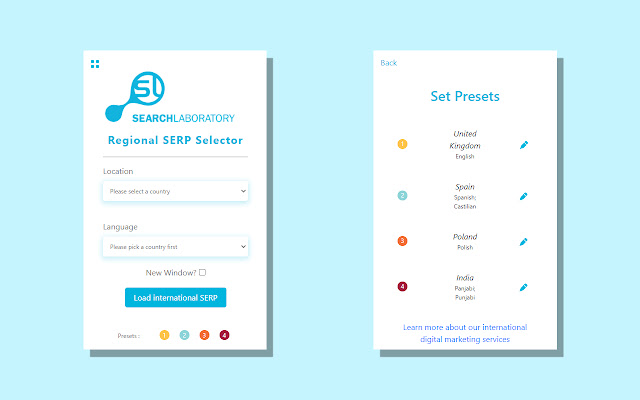

- #Chrome plugins settings new address install
- #Chrome plugins settings new address archive
- #Chrome plugins settings new address full
- #Chrome plugins settings new address Bluetooth
Make sure that the developer tools panel is visible always else Chrome will not override your geolocation. Now refresh the current web page and it will take your fake location. You can use the Postal Address finder to know the latitude and location of a place. Here check the setting that says “Emulate Geolocation coordinates” and specify the exact latitude and longitude coordinates* that you want to share with that website. Switch to the Emulation tab and choose the Sensors option in the left sidebar.
:max_bytes(150000):strip_icc()/002_disable-chrome-extensions-and-plugins-4136252-5bce68c7c9e77c0051ee7d52.jpg)
Now press the Esc (escape) key to open the Console window. While in Google Chrome, press Ctrl+Shift+I on Windows, or Cmd+Opt+I on Mac, to open the Chrome Developer Tools. If you aren’t keen to share your geographic coordinates, you can always deny that request or, if you are using Google Chrome, you can even send a fake location to the website. When you happen to visit a location-aware website, the browser will always ask for a confirmation before sharing your location. To give you an example, open the Where am I app in your browser, allow it to use your location information and the app should be able to display your latitude and longitude coordinates (it is more accurate on mobile browsers as those devices have built-in GPS). If you agree to share your location with the browser, it will send these details to Google Location Services for estimating your location which is then shared with the requesting website.

#Chrome plugins settings new address Bluetooth
How Browsers Determine your LocationĮarlier, websites would use the IP address to determine your approximate location but with the HTML5 Geolocation API, web browsers can more accurately detect your location using data from GPS, Wi-Fi networks, cell towers, Bluetooth and the computer’s IP address.

Google Chrome will only share your location if you click Allow. For instance, if you are looking for a gas station, a maps website may use your current geographic location to display stations that are near your place without you having to type your co-ordinates. Set disk cache directory – path to the Chrome disk cache (as a rule it is “$ – to \%username%\AppData\Roaming.Some websites may request access to your location so that they can serve more relevant information.Set Goggle Chrome as Default Browser: Enabled.Let’s consider the basic Chrome settings that are often centrally configured in an enterprise environment: Google Chrome – Default Settings (users can override) – recommended browser settings that users can change.Google Chrome – users (and even the local administrator) cannot change the Chrome settings on their computer specified in this GPO section.Please note that Google Chrome settings are stored in two sections of Group Policy (both in Computer and User Configuration): windows – contains Chrome policy templates in two formats: ADM and ADMX (admx is a newer administrative policy format, supported starting from Windows Vista / Windows Server 2008 and newer) Ĭonfiguring Typical Google Chrome Settings via GPO.
#Chrome plugins settings new address full
#Chrome plugins settings new address archive
#Chrome plugins settings new address install
In order to manage Chrome settings through Group Policies, you must download and install a special set of administrative GPO templates (admx files): Installing GPO ADMX Templates for Google Chrome


 0 kommentar(er)
0 kommentar(er)
